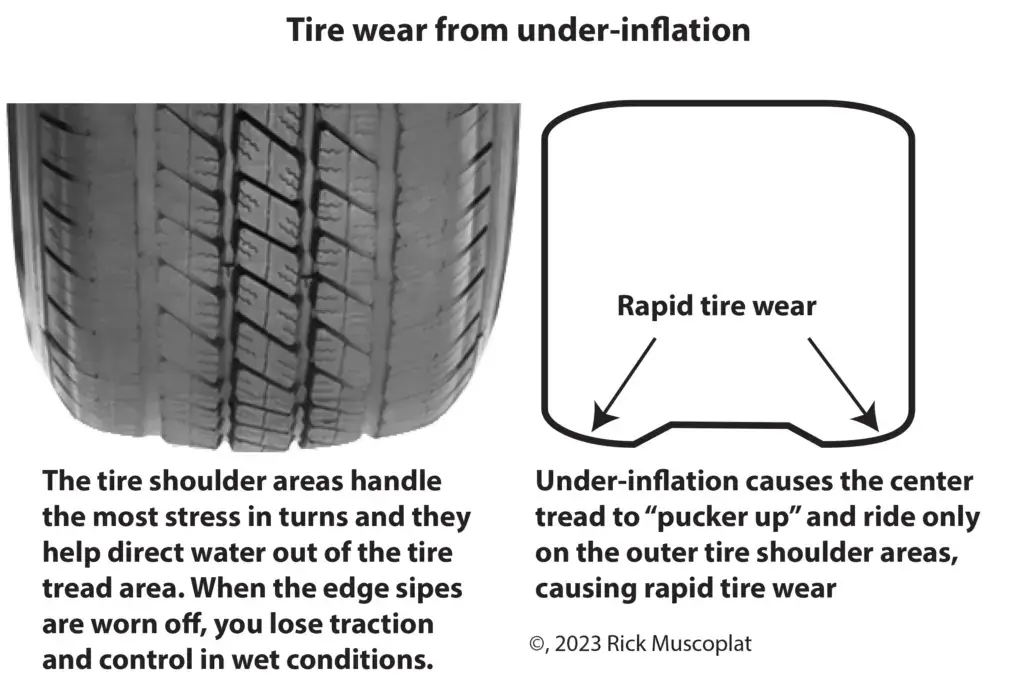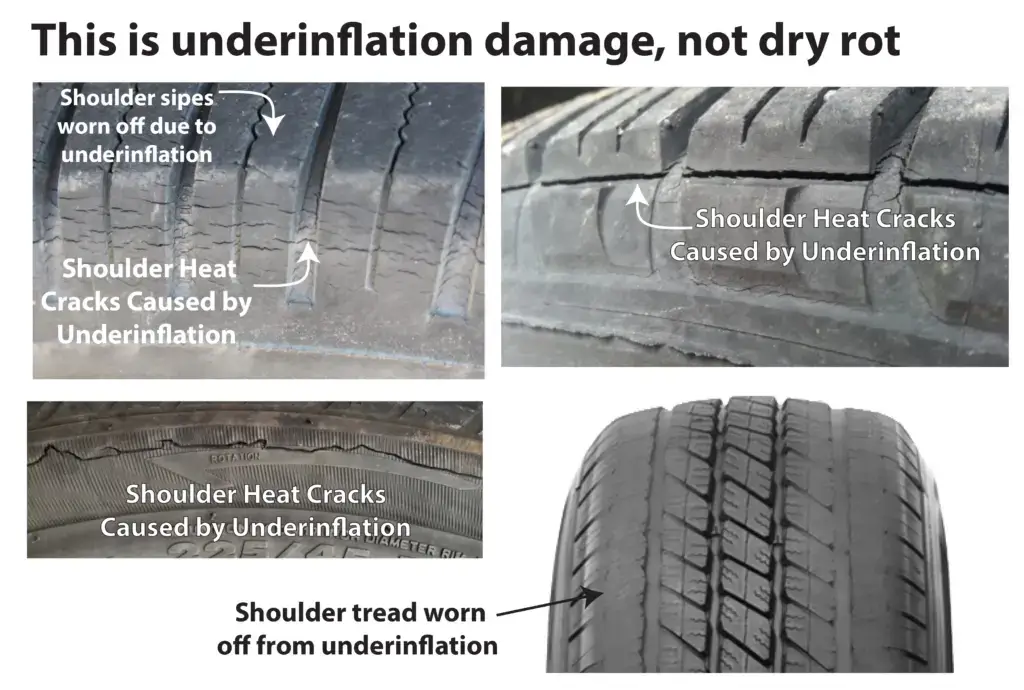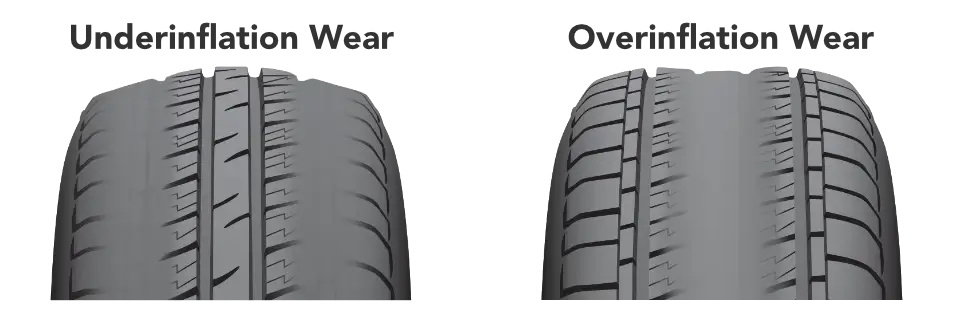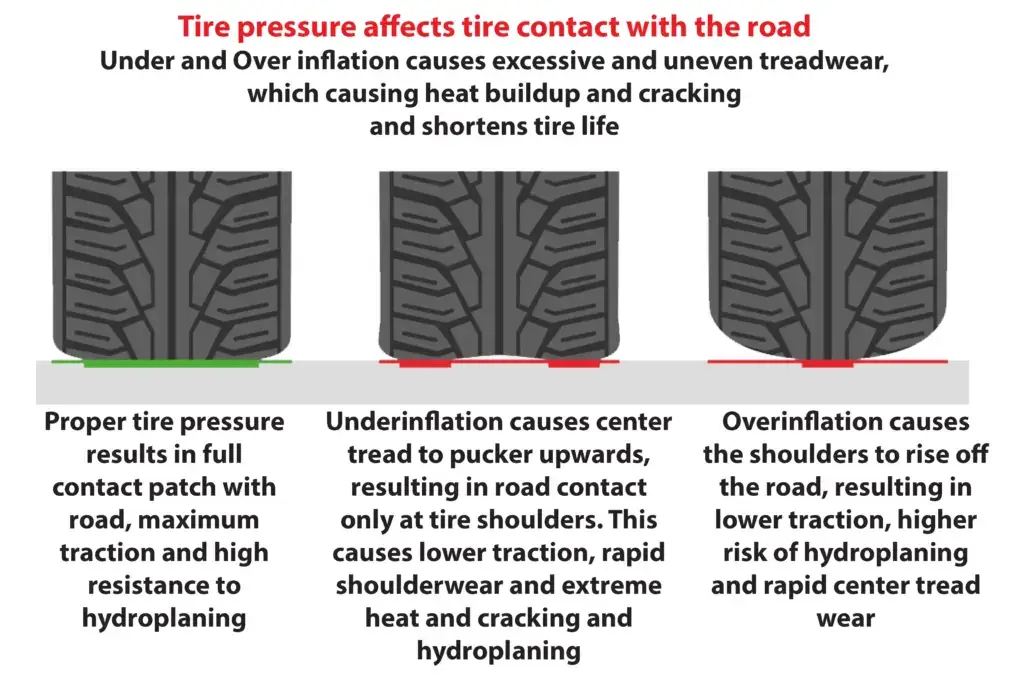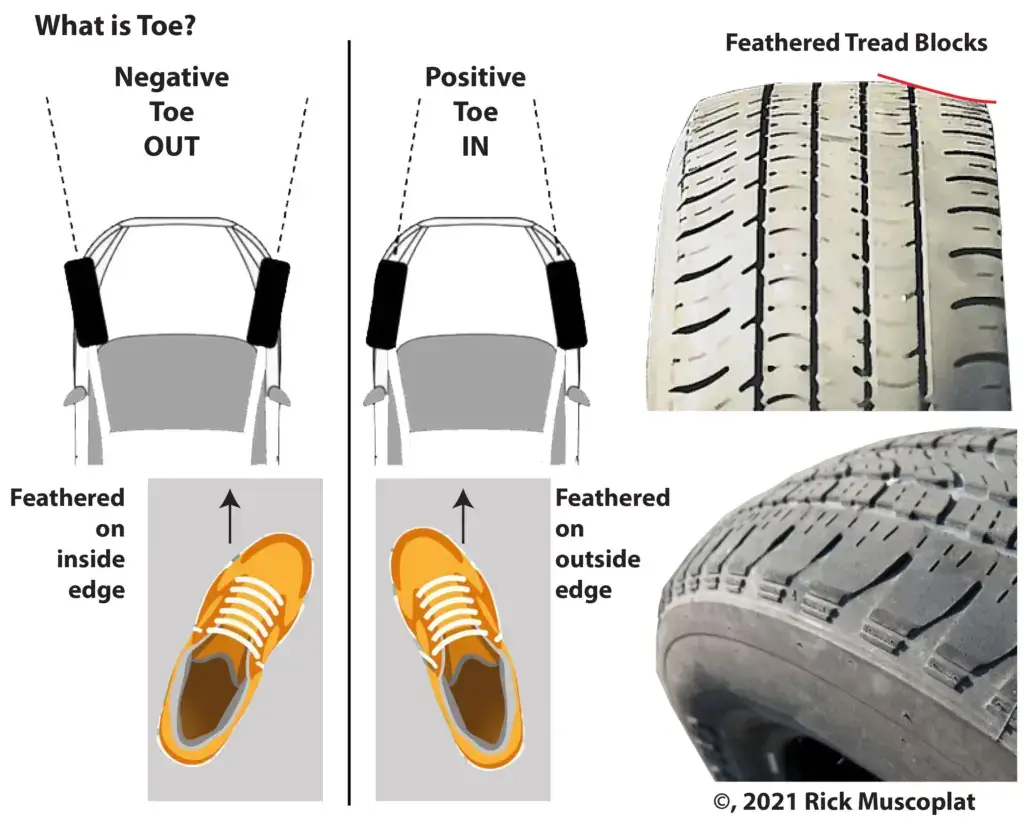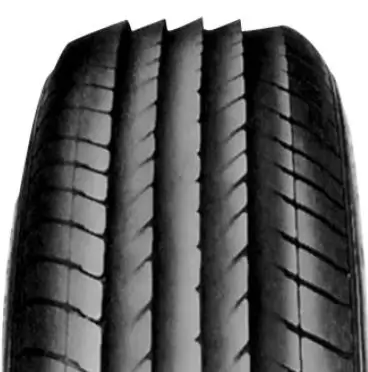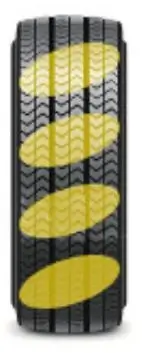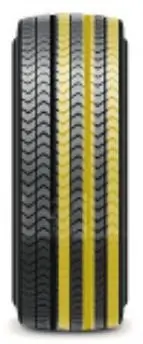Here’s what causes uneven tire wear
The three causes of uneven tire wear
Under inflation, over-inflation, and alignment issues are the three main causes of uneven tire wear. However, of those, the single most common cause is under-inflation. Over-inflation can also cause uneven tire wear as well but it’s far less common. You have to go out of your way to over-inflate your tires. To drive on under-inflated tires, all you ahve to do is ignore them. They’ll under-inflate on their own.
Here is what each uneven tire condition look like, what causes it and how to fix it.
Tires worn on left and right edges — Uneven tire wear caused by under inflation
All tires lose some amount of air. If you don’t check tire pressure and top off to the recommended pressure, you’ll prematurely wear out the tread on the right and left sides of the tires.
Under-inflation causes tire to run hot and crack
In addition to wearing out the left and right tire shoulders, under inflation causes the tire to flex and heat up, which causes the rubber to degrade and crack. This is commonly referred to as dry rot. It’s not. It’s owner error caused by driving on under-inflated tires.
What does under inflation feel like?
Under inflation gives you a slightly softer but less responsive ride. You may notice a slight delay when moving the steering wheel. That’s because the tire sidewall is flexing so much it can’t respond properly. In addition, the extra tire flex increases rolling resistance which reduces your fuel mileage
Tires worn in the center but not the edges — Uneven tire wear caused by under inflation
Over-inflation causes the opposite type of tire wear. The increased air pressure changes the tire’s shape slightly, making it take on a doughnut shape so the tire rides mostly the center tread. Since you’re driving on only a portion of the tread, the center tread wears out faster.
In addition to rapid and uneven tire wear, over inflation increases your stopping distance, especially on wet roads. That’s because the sipes and tread blocks channel water out to the edge of the tires. But the tire shoulders are lifted off the road when the tire is over inflated, it you dramatically reduce the tire’s ability to remove water. That increases the chance for hydroplaning and increased stopping distance.
Over inflation also causes accelerated suspension and steering wear
An over inflated tire is harder and provides a rougher ride and the harder tire has less cushioning ability when going over bumps and hitting potholes. So the suspension components cycle more often, causing accelerated wear. Your ball joints, struts/shocks, tie rod ends, and control arm bushings wear out faster if you drive on over inflated tires.
What does over inflation feel like?
You’ll feel every bump in the road. Potholes will jolt the entire vehicle. The vehicle may feel more responsive due to stiffer sidewalls. You’ll get slightly better mileage due to the lower rolling resistance. But whatever you save in gas, you’ll spend in accelerated suspension and steering component replacement costs.
One edge of the tire wears — how positive or negative camber causes uneven tire wear
What is camber and how does it cause uneven tire wear?
Camber is the inward or outward tilt of the top of the tire. If camber is off, your tires will wear on either the inside edge from negative camber or the outside edge from positive camber
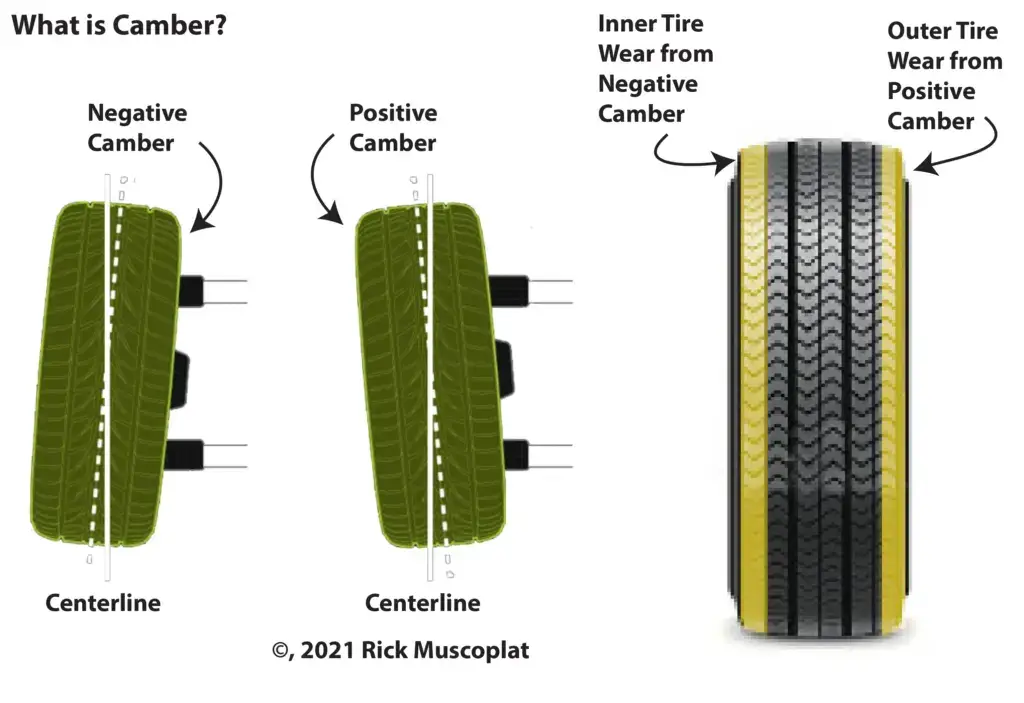
Once the edge of the tire is worn off, the tire is compromised. Get your vehicle aligned and then replace the worn tires.
What does camber wear feel like?
Improper camber causes the edge of the tire to wear off, causing the tire to take on an ice cream cone shape. Camber tire wear can cause a pull to the side. If you’re constantly correcting your steering and it’s always in the same direction, you may need your camber adjusted.
Your tire tread blocks are worn at an angle — Uneven tire wear caused by negative or positive toe
Toe angle refers to whether the front edges of your tire are pointing straight ahead, toward the center of the vehicle, or pointing outward.
The simplest example of toe angle is to point your shoe to one side and push it along the ground. You’ll wear out the leading edge of the shoe in a tapered pattern.
What does improper toe angle feel like?
You’ll feel like the vehicle is pulling to one side or you’ll feel like you always have to correct your steering.
The toe angle can be off on the front or rear wheels, or both
When toe is off on the rear wheels, the tread blocks squish together and then release, causing the tire to hop slightly and wear divots into the tire. Divots can also be causes by worn shocks and struts.
©, 2021 Rick Muscoplat
Posted on by Rick Muscoplat
